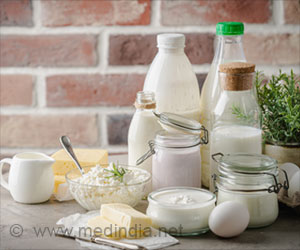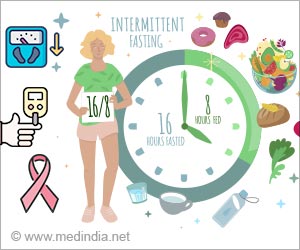Yogurt enriched with fruit or made from soy could play an important dietary role for people living with Type 2 diabetes and high blood pressure, suggests new findings.
Yogurt enriched with fruit or made from soy could play an important dietary role for people living with Type 2 diabetes and high blood pressure, suggests new findings by University of Massachusetts Amherst researchers.
Led by Kalidas Shetty, the UMass Amherst scientists screened extracts from a sampling of dairy and soy yogurts for properties that could help keep diabetes and hypertension in check, such as the activity level of enzymes that help moderate blood glucose levels. The researchers found that fruit-enriched yogurts—especially those made with blueberries or made from soy—contain active natural compounds that may curb some aspects of diabetes, the researchers report in an upcoming issue of the Journal of Food Biochemistry.The findings provide a strong rationale for further clinical studies, and for incorporating 'healthy diet design' into disease management strategies, says Shetty. 'What one eats should be part of an overall approach to therapy,' he says.
Doctoral students Emmanouil Apostolidis and Young-In Kwon collaborated with Shetty on the research.
Type 2 diabetes, which accounts for roughly 90 percent of U.S. cases, is often associated with obesity, high blood pressure and elevated levels of cholesterol. The disease is characterized by an abnormal rise in blood sugar right after a meal. This chronic high blood sugar, known as hyperglycemia, is associated with many of the complications that can arise from the disease, including the failure of various organs such as the kidneys, heart, eyes and problems with nerves and blood vessels.
Medications that prevent the spike in blood glucose often target certain enzymes—in particular, enzymes that are responsible for modifying carbohydrates before they can be absorbed by the small intestine. Carbohydrates are the major source of blood sugar and inhibiting these carb-altering enzymes—-amylase and glucosidase—slows the body's absorption of sugars.
The researchers were also interested in a third enzyme—angiotensin-I converting enzyme or ACE-I—which plays a role in the constriction of blood vessels. Medications known as ACE inhibitors block the activity of this enzyme, and such medications are used in treating high blood pressure in both diabetic and non-diabetic patients.
Advertisement
So Shetty and his team went to the local supermarket and bought peach, strawberry, blueberry and plain yogurts made by four different brands, including a soy brand. The researchers took samples of each yogurt, and tested their ability to inhibit each of the enzymes of interest, using water or a buffer solution as a control.
Advertisement
The researchers also tested the yogurts for antioxidant activity and the quantity of a group of plant chemicals known as phenols. Phenols and polyphenols are found in a wide variety of plants; they give red wine and tea their heart-healthy boosts and are especially prominent in dark-colored fruits and vegetables. The benefits of these compounds seem to come from their antioxidant powers—polyphenols scavenge cells for nasty free radicals such as reactive forms of oxygen. Free radicals can damage cellular machinery much the way that metal is turned to rust.
The extracts from blueberry yogurts had the second-highest concentrations of phenols and the most antioxidant activity, the researchers found, beat out only by soy (even the plain soy yogurt had higher phenol content than any regular yogurt with fruit). The blueberry extracts also were the best at blocking the action of glucosidase, which was correlated with the amount of phenols.
There was much more variation in which extracts inhibited -amylase and ACE-I, and it wasn't necessarily correlated with phenol content says Shetty. Soy yogurts had the highest phenol content overall, and were the best at inhibiting ACE-I.
A growing body of research indicates that diets rich in fruits and vegetables are associated with lower incidences of certain diseases, and plant compounds such as phenols are of increasing interest to scientists, says Shetty. How these dietary antioxidants mediate disease isn't clearly understood, Shetty suspects that they stimulate the body's own antioxidant enzymes to shift into a defense mode that protects tissues from chronic disease, many of which are associated with damaging free radicals.
'The numbers of people with environment-related diseases are going through the roof,' says Shetty, noting that in the United States alone more than 20 million people are estimated to have diabetes. Worldwide estimates are that 170 million to 200 million people have diet-linked Type 2 diabetes, and the World Health Organization expects those numbers to double by the year 2030.
'Poor communities and especially Native Americans are afflicted with Type 2 diabetes more than other communities,' say Shetty. 'Cost-effective dietary changes are essential for fighting this disease, and traditional diets that have a higher content of these protective antioxidants are an important part of the solution. We should be able to use diet along with other therapies, and diabetes is a disease where this especially makes sense.'
Source-Newswise
SRM











